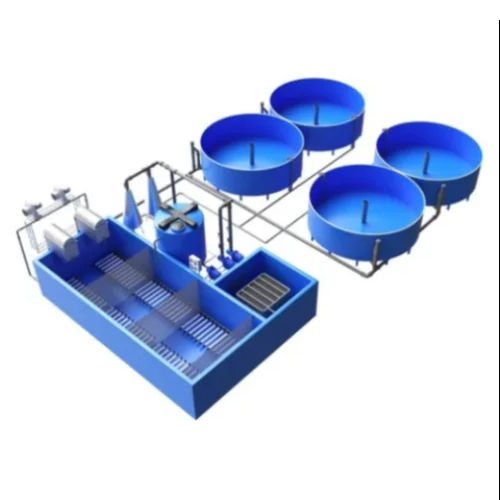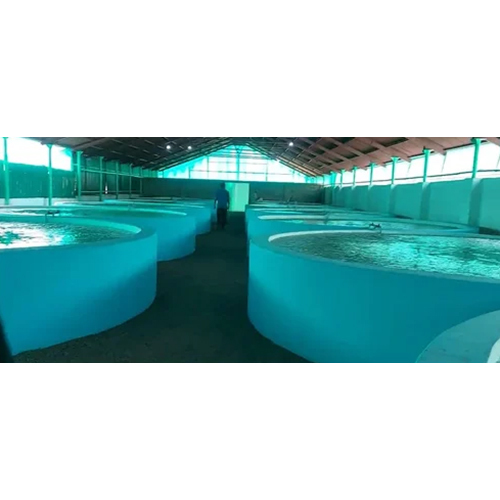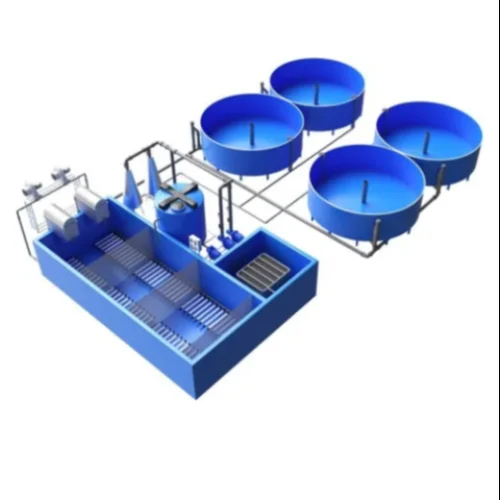RAS Aquaculture System
Product Details:
- Efficiency (%) 85-98%
- Noise Level Below 65 dB
- Water in conductivity 100-400 S/cm
- Power Consumption 3-30 kW
- Flow Rate 500-5000 LPH
- Feature Energy Efficient, Compact Design, Modular System
- Ph Level 6.5-8.5
- Click to View more
RAS Aquaculture System Price And Quantity
- 1 Piece
- 800000 INR/Piece
RAS Aquaculture System Product Specifications
- 85-98%
- Up to 99%
- Below 65 dB
- Fully Automatic
- RAS Aquaculture System
- 100-400 S/cm
- Bio Filter, Mechanical Filter, UV Filter
- 3-30 kW
- Energy Efficient, Compact Design, Modular System
- 500-5000 LPH
- 5 m to 500 m
- Food-grade HDPE, FRP, Stainless Steel
- Electric
- 6.5-8.5
- 5000-100000 L
- Groundwater / Tap water / River water
- Floor Mounted / Containerized
- Recirculating Aquaculture
- Electric
- 90-99%
- Fish Farming, Shrimp Culture, Ornamental Fish
- 300-500 S/cm
- 220-380V
- Centrifugal / Submersible
- 50/60 Hz
RAS Aquaculture System Trade Information
- Cash Advance (CA), Cash in Advance (CID), Cheque
- 40 Piece Per Year
- 120 Days
- Yes
- Sample costs shipping and taxes has to be paid by the buyer
- Asia, Australia, Central America, North America, South America, Eastern Europe, Western Europe, Middle East, Africa
- All India
- ISO
Product Description
A Recirculating Aquaculture System (RAS) is a technology used in aquaculture (fish farming) that enables the re-use of water within the system, rather than continuously discharging or replacing it. Here are the key components and benefits of a Recirculating Aquaculture System:
RAS Aquaculture System Manufacturer in india
RAS Aquaculture System Manufacturer in Gujarat
RAS Aquaculture System Manufacturer in Vadodara
RAS Aquaculture System Supplier in india
RAS Aquaculture System Supplier in Gujarat
RAS Aquaculture System Supplier in Vadodara
Components of a RAS:
-
Fish Tanks: These are the primary tanks where fish are housed and grown. They can vary in size and design depending on the species and production scale.
-
Filtration System: This includes various types of filters such as mechanical filters (to remove solids), biological filters (to convert ammonia to less harmful compounds), and sometimes chemical filters (to remove specific pollutants).
-
Oxygenation System: Vital for maintaining oxygen levels in the water, typically achieved through aerators or diffusers to ensure fish health and growth.
-
Water Quality Monitoring: Sensors and probes are used to monitor parameters like temperature, pH, dissolved oxygen, ammonia levels, and more. This ensures optimal conditions for fish growth.
-
Biosecurity Measures: Preventing diseases is crucial in RAS. Measures include quarantine protocols, disinfection procedures, and controlling access to the system to minimize risks of introducing pathogens.
-
Water Treatment: Additional treatments may include UV sterilization or ozone treatment to control pathogens and maintain water quality.
-
Solid Waste Management: Techniques to manage and remove solid waste from the system, such as settling tanks or other separation methods.
Benefits of Recirculating Aquaculture Systems:
-
Water Conservation: RAS systems use significantly less water compared to traditional aquaculture systems, where water is continuously flushed through.
-
Environmental Impact: They reduce the environmental impact by minimizing water discharge and pollution to surrounding ecosystems.
-
Controlled Environment: Allows for precise control of water quality parameters, optimizing conditions for fish growth and health.
-
Year-round Production: Enables production regardless of seasonal variations, as environmental factors can be controlled indoors.
-
Higher Stocking Densities: With optimal water quality management, RAS can support higher densities of fish, leading to increased productivity per unit area.
-
Reduced Disease Risks: Better control over environmental factors and biosecurity measures helps reduce the risk of diseases spreading among fish populations.
-
Location Flexibility: RAS can be implemented in various locations, including urban areas, where space for traditional aquaculture may be limited.

Price:
- 50
- 100
- 200
- 250
- 500
- 1000+








